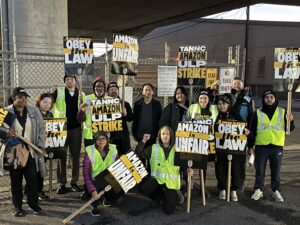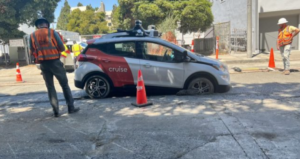Navigating the Commercial Driver’s License Drug and Alcohol Clearinghouse
May 5, 2020
For any commercial driver’s license (CDL) holder it would be far better to avoid the need to use the following information. If you have any suspicion that your use of drugs or alcohol might put you in jeopardy of testing positive on a urine or breath test, please know that TAP and TARP are here to help you.
In 2020 the Department of Transportation (DOT) and Federal Motor Carrier Safety Administration did two notable things. They increased the random testing rate to 50% and, on January 6, launched the Drug and Alcohol Clearinghouse, an on-line database designed to eliminate loopholes that permitted commercial drivers to avoid complying with the DOT Drug and Alcohol Testing regulations.
Now that the Clearinghouse is in operation and the first cases have been handled by TAP and TARP, it is important to get accurate information out to all commercial drivers, their business agents and shop stewards.
How is the Clearinghouse used?
First of all, no driver names or CDL numbers are automatically entered into the Clearinghouse.
All employers of commercial drivers must now conduct annual limited queries for current commercial drivers. A limited query is simply an electronic search of the clearinghouse database for a driver’s name and CDL number. If the name does not appear in a search, that means the driver’s name and CDL number are not even listed in the Clearinghouse. That driver is “clear” and has “passed” the query.
If a driver violates the Drug and Alcohol Testing Regulations, the employer must enter the violation, the driver’s name and CDL number into the Clearinghouse.
Full queries require driver consent and must be done for all prospective CDL drivers and any driver who violates the drug and alcohol regulations.
Any CDL holder who has violated the DOT drug and alcohol rules must register in the Clearinghouse if he or she plans to ever return to safety-sensitive duty as a commercial driver.
Employers must enter violation data even if the driver has not registered.
Only violations that occur after January 5, 2020 will be entered. It will take 3 years of entering violations in the Clearinghouse before employers will not be required to obtain three years of history from all of a driver’s prior employers. Until 2023, employers must continue to obtain testing information from an employee’s previous employers dating back three years.
Summarizing the two kinds of queries:
1. Full Queries – After obtaining driver consent, employers must conduct a full query before hiring a commercial driver. Employers must also conduct full queries for any driver who has a drug or alcohol violation.
2. Limited Queries – Every year, employers must conduct a limited query for all commercial drivers to determine if the driver has a violation in the database. If a violation is found, a full query must be done to determine whether that driver is eligible to drive (by having completed the return-to-duty process following a violation).
A positive Query result will show any violation history, test details and whether the driver is eligible to return to duty. Violations remain in the Clearinghouse for a minimum of five years or until the follow-up testing schedule is completed, whichever is later.
Any driver who is notified of a violation and is employed by two or more employers must provide written notification of the violation to any other employers within 24 hours of receiving official notice, or prior to performing any safety-sensitive functions, whichever comes first. If a driver does not report a violation, it will be discovered during the mandatory annual query. Civil and criminal penalties are possible for not reporting a violation under Federal regulations. In cases where a driver has multiple employers, return-to-duty and follow-up testing must be done by each employer.
What information does the employer enter into the Clearinghouse database?
1. The specific violation,
2. Negative Return-to-Duty alcohol and/or drug test result, and
3. Successful completion of follow-up testing.
This information is secure and only registered users can access information for designated purposes. For example: other agencies, such as the State Department of Motor Vehicles and law enforcement can only receive driver’s eligibility status. Drivers can access their own information free of charge but not information about other drivers, and an SAP cannot view a driver’s dashboard and can only enter required information.
What MUST a Commercial Driver do?
1. Register after being informed of a violation
2. Respond to a consent request by the current employer after a violation and to a potential employer to allow a full query. Failure to consent prohibits an employer from permitting the driver to operate a commercial motor vehicle.
Once registered, a driver can review his or her own Clearinghouse record and, in violation cases, invite a Substance Abuse Professional (SAP) to begin the evaluation, treatment and return-to-duty process.
To register, a driver will need to follow instructions found at: https://clearinghouse.fmcsa.dot.gov/Resource/Index/Registration-Driver-Instructions
Drivers will have the option of choosing email or U.S. Mail for registration purposes. Choosing U.S. Mail may delay the process for up to 2-3 weeks.
What are the Consent requirements?
Limited Query – for annual check on currently-employed drivers, only general consent is required. It is outside the Clearinghouse and can be in writing.
Full Query–pre-employment and violations: specific electronic consent within the Clearinghouse must be provided.
Once a driver has registered, a query consent request will be displayed on that driver’s dashboard. The driver must respond.
How will this work at TAP and TARP?
If the driver is covered through a participating Trust Fund, the SAP evaluation can be done at no cost to the driver.
To begin the SAP evaluation, treatment, and return-to-duty process, a driver must be officially notified of a violation by either the employer or MRO.
Note: A driver who believes a collected specimen will come back positive but who has not been officially notified cannot begin the DOT process.
Note: If a driver is seeking treatment because of a serious substance abuse problem, a non-SAP evaluation can be conducted and a referral to treatment can precede the DOT process.
Steps
Once officially notified of a violation, the driver must:
Register in the Clearinghouse
Invite SAP on the driver’s dashboard (call TAP or TARP for the name of an available SAP and let them know an invitation will be made).
Following the invitation:
SAP will accept the driver/member’s invitation.
TAP/TARP Counselor/SAP will verify driver’s health care plan to determine eligibility for SAP and substance abuse treatment. If driver is not eligible for services, only the employer can provide the name of an acceptable SAP. TAP/TARP cannot conduct the evaluation in these instances.
SAP evaluation must be conducted in-person.
SAP will ask to view the driver’s dashboard, conduct a mandatory in-person evaluation, recommend appropriate treatment and record the assessment within one business day.
Some level of treatment must be recommended in all cases per DOT regulations.
SAP will monitor the driver’s treatment process and obtain verification from the treatment provider.
SAP will conduct a face-to-face follow-up assessment. If full compliance is determined, SAP will enter data within 24 business hours and advise the employer of the driver’s eligibility for return-to-duty testing. (Whether the employer allows the driver to return to work is determined by company policy and/or CBA. Return-to-duty must be conducted by driver’s next employer in cases of termination).
If the SAP Return-to-Work process is not completed, the DOT violation stays on the driver’s record forever and no employer can allow a driver to operate a commercial motor vehicle.
You can reach a counselor at:
TAP—800-253-8326
TARP—800-522-8277





